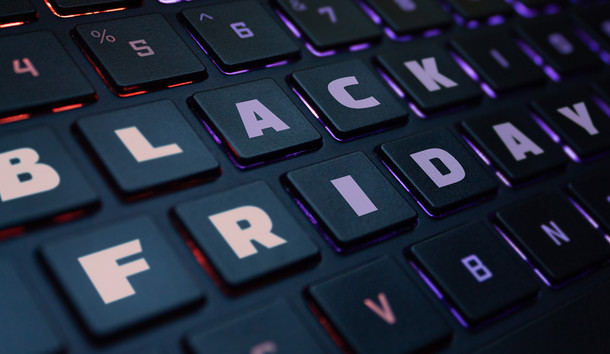The Future of Black Friday in a World of Always-On E-Commerce
Not long ago, Black Friday was a largely American tradition, barely recognised outside the US. What began as a single day of pre-Christmas bargains has transformed into something much larger. From one day, to a weekend, and now effectively spanning the entire month of November, Black Friday has evolved into a prolonged shopping event. While this extended period allows businesses more time to promote their deals, it also means consumers are bombarded with offers for weeks on end. Some shoppers may enjoy the extended sales, but for others, the constant promotion can be overwhelming, potentially even pushing them away from certain brands.
Today’s digital landscape inundates consumers with offers, flash sales, and personalised promotions year-round, so it’s fair to ask: does Black Friday still hold the same relevance it once did, or has it become just another date in an already saturated sales calendar?
From Physical to Digital Sales
Black Friday began in physical stores, well before the rise of the modern internet. The term itself dates back to the 1950s and 60s, when Philadelphia police officers used “Black Friday” to describe the chaotic crowds that flooded the city for holiday shopping after Thanksgiving. Over time, retailers sought to reframe the phrase with a more positive spin, suggesting that it marked the point in the year when stores moved from operating “in the red” to “in the black,” meaning when they finally turned a profit (1).
Interestingly, Black Friday didn’t originally involve the heavy discounts we now associate with it. It was simply the day after Thanksgiving, when people naturally began thinking about Christmas and took the opportunity to start shopping during the long weekend. Retailers realised they could attract even larger crowds by offering discounts, and eventually, Black Friday became known for deals often better than those available just before Christmas (2).
While in-store shopping could be hectic and crowded, in terms of product options, it was often a more focused experience, with fewer distractions and less direct competition. Online shopping, by contrast, introduces a different kind of chaos, one driven by an overwhelming number of options. For a single item, consumers may face hundreds of listings and ads competing for their attention. This abundance of choice means navigating a lot more noise, making it harder to cut through the clutter and make confident decisions.
Consequences of Consumer Fatigue
Consumer fatigue, also known as marketing fatigue, occurs when people become overwhelmed by excessive, irrelevant, or poorly timed marketing messages. This overload leads to reduced engagement, brand disengagement, and often, negative perceptions.
By November 1st, 2024, four weeks before Black Friday, 67% of consumers were already expected to experience marketing fatigue (3). And it doesn't just mean they’ll ignore your messages in the short term. Fatigue can reach a level where consumers actively avoid your brand altogether. According to the 2025 Optimove Insights Consumer Marketing Fatigue Report (4), 70% of consumers unsubscribed from at least one brand in the past three months due to overwhelming message volume, underscoring the real risk of overcommunication.
Black Friday campaigns and broader Christmas messaging often begin well before November. In fact, it’s now common to see seasonal promotions appear online and in stores as early as the end of summer, sometimes even sooner. This prolonged exposure can wear consumers down long before the peak shopping season arrives.
Not Every Deal Is as Good as It Looks
Black Friday presents valuable opportunities for both consumers and businesses. Still, not every deal is as good as it seems, with some retailers taking advantage of the hype – another reason why consumers are more wary of the event.
A 2023 investigation by Which? examined 227 products over a two-week Black Friday period and found that 92% of the deals were either the same price or cheaper at other times of the year (5). The BBC, reporting on the same research, noted that: “It used to be that you had to establish a price for 28 days before it could be changed, but this is no longer the case (6).”
While it's normal for prices to fluctuate throughout the year, some retailers inflate prices ahead of Black Friday only to "slash" them later, creating the illusion of a deep discount when, in reality, the offer may be no better than usual.
The psychological pull of Black Friday, particularly through "limited-time offers" and "exclusive deals," taps into FOMO (fear of missing out), encouraging quick decisions that may not always lead to real savings.
Fortunately, many consumers are becoming wiser to this now. According to research by Lowell, 27% of Brits actively monitor the price of a product in the lead-up to Black Friday and only purchase if the price genuinely drops. However, 10% still admit they wait until the day itself and often make impulse purchases based on eye-catching deals (7).
Changing Expectations Require Evolving Strategies
While shoppers are still on the lookout for great deals, that's no longer enough on its own. Today’s consumers also expect a smooth, hassle-free shopping experience - whether that’s a seamless transition between online and in-store browsing, or a quick and efficient online checkout process. They also value relevant offers and personalised messaging, both of which are essential for building trust and encouraging long-term loyalty. In short, consumers are now looking for the complete package: convenience, value, and connection.
Naturally, your offering will influence your audience. A business with a broad product range is likely to attract a wide and diverse customer base, while more niche offerings typically appeal to a narrower, more targeted group. Either way, aligning your strategy with your customers’ specific needs and expectations is key to standing out in a crowded market.
Learn more - The Power of Personalisation: Creating Tailored Customer Experiences in Retail - Part 1
Has Black Friday Lost Its Original Appeal?
When Black Friday first rose to prominence, it was much simpler – it was an opportunity for consumers to grab big discounts ahead of the holidays. Today, the landscape is far more complex, and as with online shopping throughout the rest of the year, consumer behaviour has evolved: expectations are higher, choices are broader, and people are becoming more selective about where they spend their money.
Take Black Friday and Cyber Monday (BFCM) in 2024, for example. Retail traffic was down by 4.3% YoY in November 2024, yet revenue rose by 0.9% (8). Rather than pulling back completely, it seems consumers are becoming more intentional, taking time to research, compare, and budget carefully to ensure they’re getting genuine value.
Nationwide reported 7.39 million transactions by 5 pm on Black Friday 2024, a 16% increase over a typical Friday and 11% higher than Black Friday 2023 - clear signs that shoppers are still actively engaging with the event. Similarly, Cyber Monday saw stronger traffic and conversion rates, despite shorter engagement times, pointing to more purposeful, deal-driven shopping (9).
With many UK consumers reporting they use Black Friday to buy up to a quarter of their Christmas gifts (9), it’s clear the event still holds value. However, shoppers are increasingly aware of questionable deals and marketing tactics, making them more discerning in who they choose to buy from.
Summary
While marketing fatigue and concerns over deceptive discounts are increasingly shaping consumer sentiment, particularly in the lead-up to peak shopping periods like Black Friday, these challenges haven’t rendered the event irrelevant. Shoppers are still actively seeking ways to save, but their expectations have evolved. In today’s landscape, offering the deepest discount alone is often not enough to capture attention or drive loyalty.
Modern consumers are looking for genuine value, which goes beyond price. They're drawn to brands that provide a frictionless shopping experience, whether online or in-store, and engage them with relevant, personalised messaging that feels timely and meaningful, not intrusive. In an increasingly crowded and competitive marketplace, it's a combination of trust, convenience, relevance, and experience that turns casual browsers into loyal customers.
Black Friday is still an opportunity, but success now depends on how well a brand can cut through the noise and connect with consumers in a way that feels authentic and worthwhile.
References:
- https://www.britannica.com/story/why-is-it-called-black-friday
- https://blackfriday.com/news/black-friday-history
- https://www.marketingtechnews.net/news/67-of-consumers-will-have-marketing-fatigue-by-november-2024/
- https://www.optimove.com/blog/marketing-fatigue-insights
- https://www.which.co.uk/news/article/black-friday-deals-exposed-as-duds-aoK6u3j2suyu
- https://www.bbc.co.uk/news/articles/ckgv52859jpo
- https://www.lowell.co.uk/about-us/lowells-blog/lifestyle/the-truth-behind-black-friday-spending/
- https://brc.org.uk/news-and-events/news/associate-insight/2025/black-friday-2024-lessons-retailers-can-take-into-peak-season-2025/
- https://www.nationwide.co.uk/media/news/nationwide-live-black-friday-data-5pm-update-1

